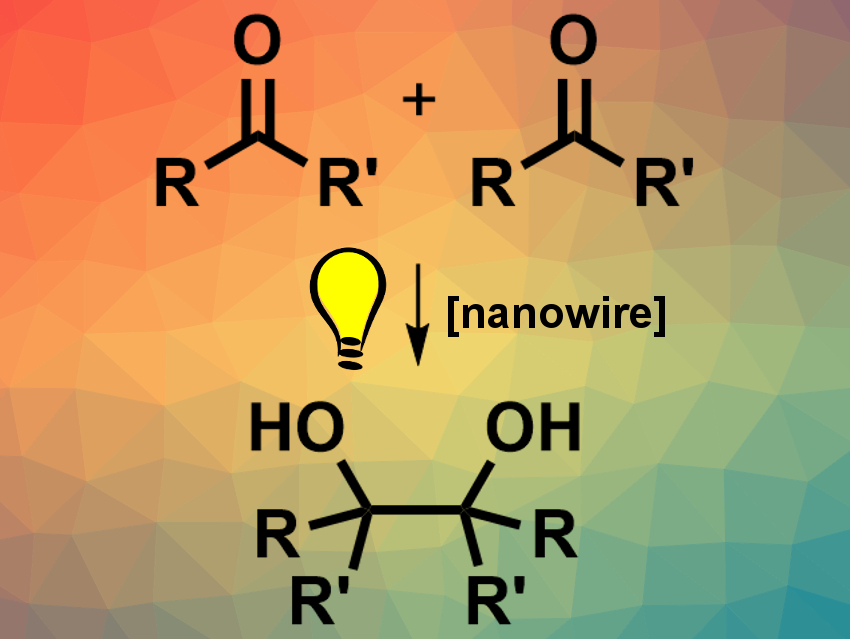New methods to create C–C bonds are always interesting for organic synthesis. Photocatalysis can be used for radical couplings, for example, for the pinacol coupling reaction (pictured) in which aldehydes or ketones are coupled at the carbonyl C atoms. Most often, homogeneous photocatalysts such as Ru or Ir complexes are used. However, they are expensive and difficult to recycle and reuse. Heterogeneous photocatalysts could solve these problems.
Zetian Mi, University of Michigan, Ann Arbor, USA, and McGill University, Montreal, Canada, Chao-Jun Li, McGill University, and colleagues have used gallium nitride nanowires (GaN NWs) on a silicon wafer as a reusable, heterogeneous photocatalyst system for pinacol coupling reactions. The team used plasma-assisted molecular beam epitaxy (PAMBE) under nitrogen-rich conditions to grow GaN NWs on an Si(111) wafer. As shown by scanning electron microscopy (SEM), the nanowires form a forest-like, vertical array on the silicon surface. The electronic properties of the GaNWs could be tuned to give either an n-type or a p-type semiconductor by doping with either a group 4 element (such as Ge) or a group 2 element (such as Mg), respectively.
The researchers used p-type GaN NWs to catalyze pinacol coupling reactions under a black light bulb in methanol at room temperature. The reaction gave the desired diols in excellent yields for a wide range of ketones. Aldehydes could also be coupled, but at lower yields due to the formation of hydrogenated side products. Both ketones and aldehydes can also be cross-coupled with formaldehyde when an excess of formaldehyde is used. The catalyst can be easily reused for many reactions.
- GaN nanowire as a reusable photoredox catalyst for radical coupling of carbonyl under blacklight-irradiation,
Mingxin Liu, Lida Tan, Roksana Tonny Rashid, Yunen Cen, Shaobo Cheng, Gianluigi Botton, Zetian Mi, Chao-Jun Li,
Chem. Sci. 2020.
https://doi.org/10.1039/d0sc02718a




